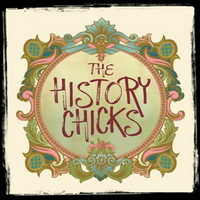by The History Chicks | Jun 12, 2011 | Biography Episode, Episode, Podcasts
Not everyone in the Gilded Age had a wardrobe of Worth dresses and the luxury of boredom; an army of servants were required behind the scenes to ensure the Dollar Princesses’ success. The heiresses met this strict British hierarchy with varying degrees of competence.
Consuelo Vanderbilt, who was once described as “barely allowed to move her own hairbrushes” at home, was given full control over 40 indoor servants upon her marriage to the Duke of Marlborough. Though given no real guidance from her husband, she soon learned that inertia was the best policy. Even her attempts to add more staff to relieve what she saw as the housemaids’ overwork was met with resistance – as was her request to add running water to their quarters!

Six housemaids were seen as quite enough, thank you very much…(This is the same palace that employed one man to wash all of these windows – and it took him a full year!)
Lady Troubridge’s “The Book of Etiquette” (1926) sets forth the ideal attitude for the upper classes in dealing with their servants, as follows: (Let’s hope the theory was also put into practice!)
‘It would appear that there are people who feel that those who labour in the capacity of servants are inferior, but in most cases it is those who place servants on a lower plane who are themselves inferior. We owe to those who take part in the work…more than the wages we pay them: we owe them gratitude, courtesy and kindness. They, equally, should treat their employers with courtesy and kindness, and they should regard it as beneath their self-respect to ask wages for work which they are not fitted to perform. A reliable servant holds a place of importance in the home, and it should be recognised in the social world as a place worthy of courtesy and respect.’
-I discussed briefly the most common indoor servants of the time:
Menservants: Butler, Valet, Chef, Footman, Hallboy
Womenservants: Housekeeper, Lady’s Maid, Cook, then maids, maids, maids of every description….
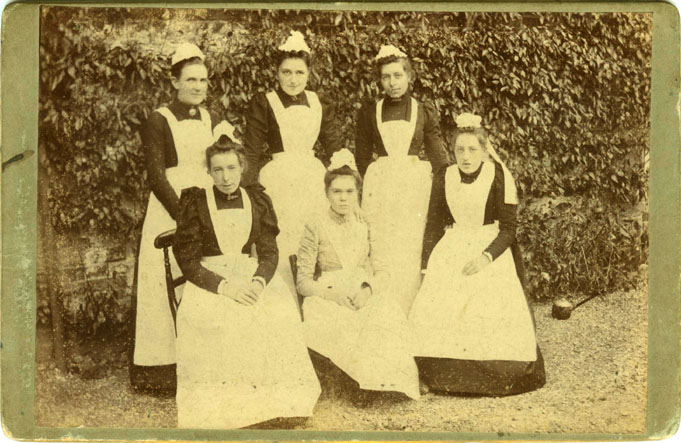
Does the little one look any older than ten?
*****Recommended Media *****
UPSTAIRS, DOWNSTAIRS:
I recommended (and how could I not?!) the classic “Upstairs, Downstairs.”
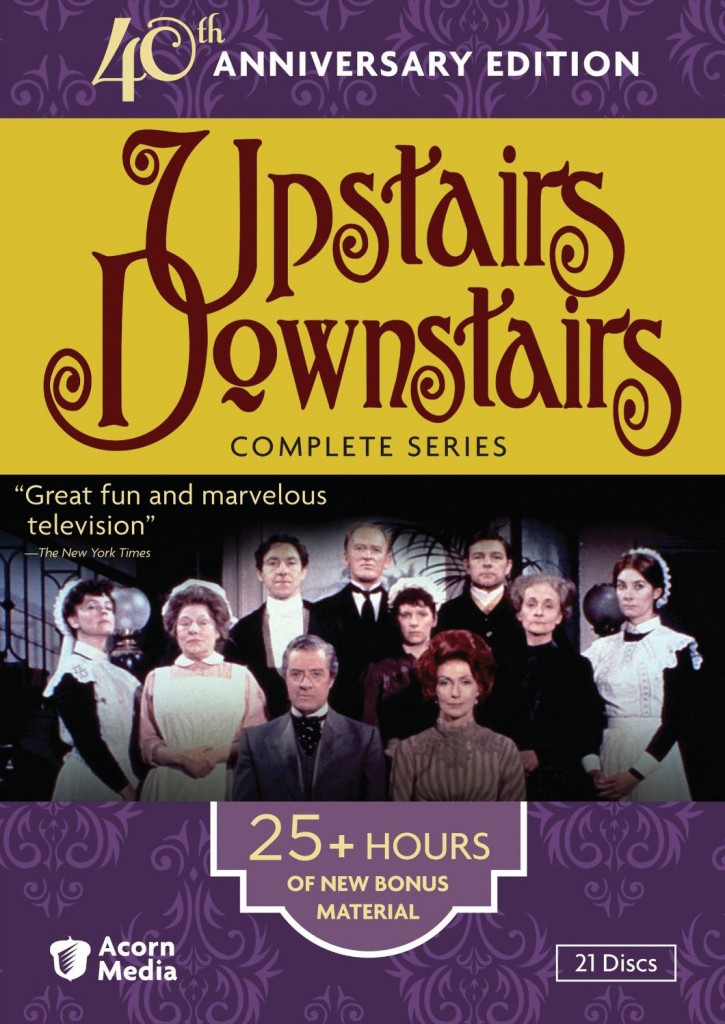
Servant life as soap opera.
For an Up/Down fan page including photos, links, and news, please visit: http://www.updown.org.uk/
MANOR HOUSE:
And a true obsession of mine, the wonderful, amazing “Manor House” series, in which modern people were cast as Edwardian servants and aristocracy:
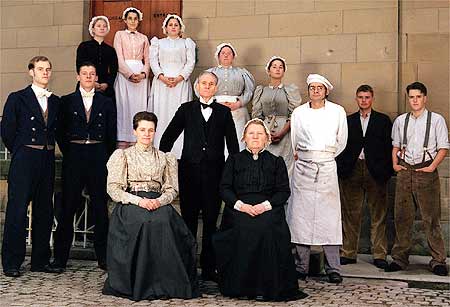
Looks like any classic servant portrait of the day. Note the upper servants are definitely given pride of place in the lineup.
The show’s website is a must – so many things to see, including the daily schedules for each “servant” or “family member.” – and their rules of conduct.
My favorite feature is “You in 1905.”
http://www.pbs.org/manorhouse/
GOSFORD PARK
I mentioned the Robert Altman film “Gosford Park”, which (as it’s set in 1932) is well out of our period, but has great insight into the world of the country house servant. In particular, I love all of the “offices” in the basement, all the languor of the upstairs people while all chaos breaks downstairs.
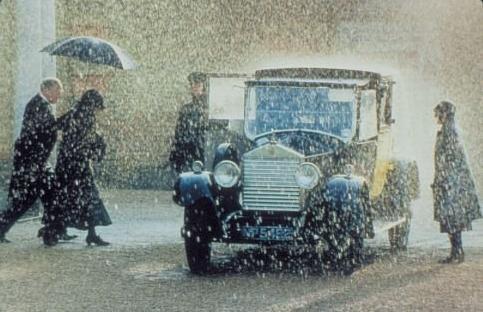
Notice the lady’s maid and driver standing in the rain? They were not allowed to get into the car until the Countess did.
The IMDB page for the movie:
http://www.imdb.com/title/tt0280707/
HARBOR HILL:
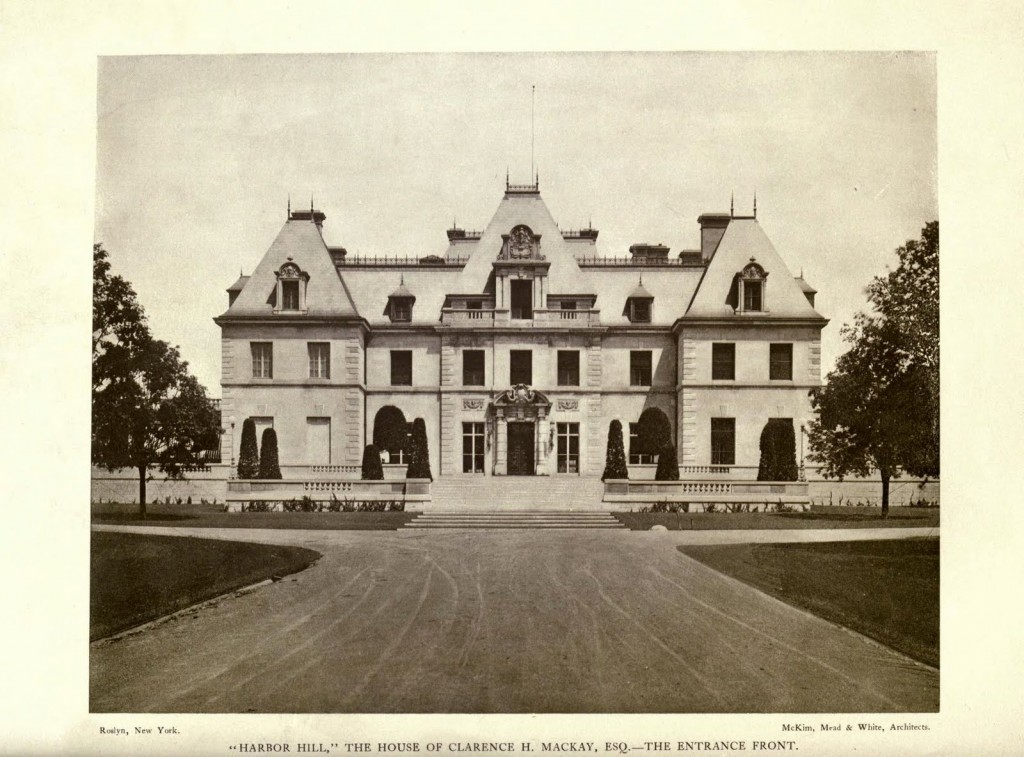
This house was demolished in 1947. Heartbreaking!
Here is the link to a wonderful article from Harper’s Bazaar in 1904, decribing (and showing!) the atypically luxurious accommodations for servants in that house.
http://bit.ly/Harborhillservants
As always, music for our podcast comes courtesy of Music Alley. Visit them at music.mevio.com.
by The History Chicks | Jun 2, 2011 | Biography Episode, Episode, Podcasts
Call them whatever you want; Gilded Age Heiresses, Dollar Princesses, Buccaneers– they all point to the same type of woman. Spanning about a twenty year time period wealthy American ladies of marrying age headed across the pond to snag the ultimate in opulent accessories: a noble title.
In this episode, the third part of our Gilded Age series, we sit down to a chat about several of these women. If you have yet to listen to the Mrs Astor podcast, you might want to take some time to do that now. We do reference several people discussed in that episode.
During the last part of the 1800s the British economy was drifting from agriculturally-based to more industrial. The funds nobility required to maintain not only their magnificent homes, but their lifestyle, was diminishing.
On the other side of the Atlantic, a group of American Mamas and Daughters have stalled socially. They could not enter the next tier of society and felt the best option to propel them into that social level was to have a title in the family. Not short of cash, and having well educated and adventurous daughters, they headed to England. Awaiting them was Edward VII, Prince of Wales who had a very soft spot in his heart for these charming young women.
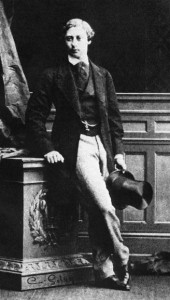
A young (and thin) Prince of Wales
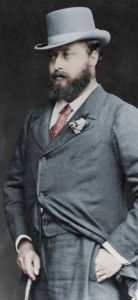
Edward VII, once he hit his stride
One of the first women to become titled was Brooklyn-born Jennie Jerome Churchill.
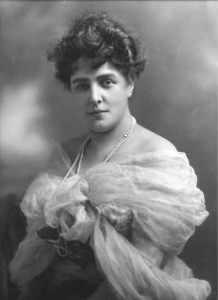
Jennie Jerome Churchill
In 1873, a 19 yr old Jennie meets Lord Randolph Spencer-Churchill, Second son (and therefore NOT the title-inheritor!) of the 7th Duke of Marlborough.
Quick, scandalous proposal. Slower engagement. Some hoops had to be jumped through by the couple, and finally the Prince of Wales got involved. Jennie married at the British Embassy in Paris the following spring and became Lady Churchill… and seven months later she gave birth to a full term son…and named him Winston.

He was a lot cuter as a kid.

Lady Randolph and her sons Winston and John
We talked a bit about the Minnie Stevens and her mother. Minnie, soon to be Lady Paget, that is.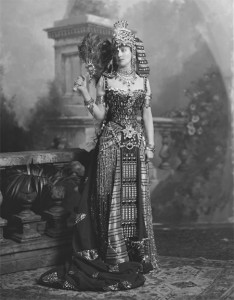
Next up in our discussion is Consuelo Yznaga.
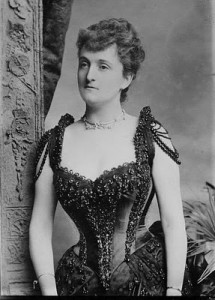
Consuelo Ygnaza showing off her tiny waist
She landed her title as Duchess of Manchester when she married Viscount Mandeville in 1876. This union really got things hopping in NYC after Consuelo’s childhood friend Alva Vanderbilt threw a ball in her honor. (Seriously, if you don’t know who Alva is or what happened at that ball, you simply MUST listen to the Mrs Astor podcast!) Alva was also inspired to get a title for her one and only daughter whom she had named after her childhood friend…Consuelo. (Yes, same one. How many Consuelos can there be in this story?)

Mom. Alva Vanderbilt.( Of course we found the most stern pic of her possible!)
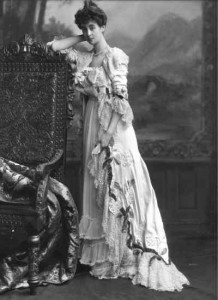
Sweet Consuelo
Consuelo Vanderbilt was raised to become royalty. Alva saw to all her education, as well as overseeing the suitors who came sniffing around. Alva, wishing to draw attention away from the fact that she and Willliam K were divorcing, got things moving as only Alva could. Consuelo had, for a brief moment, developed a backbone and told Mommy Dearest that she was engaged to be married to someone Mom did not approve of. Alva manipulated that thought right out of her daughter’s head and in 1895 a tearful 18 year old Consuelo married of Charles Spencer- Churchill, the 9th Duke of Marlborough, becoming a Duchess. 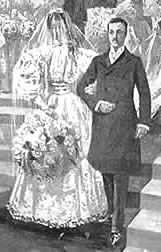
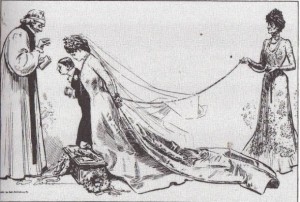
Satirical cartoon by Charles Dana Gibson. Whoever could that be? (Note the couple kneeling at Cupid’s Coffin)
She gave him not only a hefty dowry, but also two boys in rapid succession. She gave us the clever phrase,” an heir and a spare”.
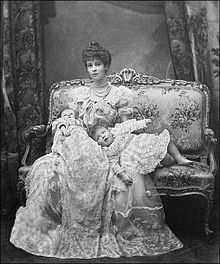
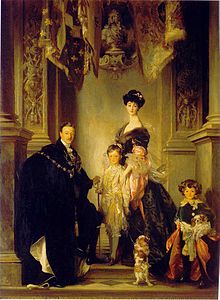
The fam. Note how the artist, Singer Sargent, posed Consuelo to appear as if she were standing on stairs to give her a reason for being taller than the Duke.
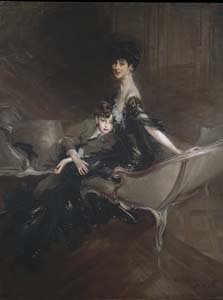
We love the look on her face here and the comfort of her son. By Giovanni Boldini
She also, eventually, left him, spent a good deal of her life in philanthropic work, and had the marriage annulled. She went on to have a great life when she married the dashing Jacques Balsan.
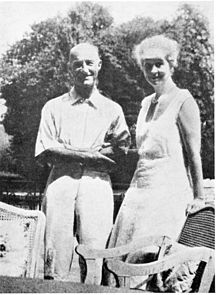
Jacques and Consuelo..happily ever after.
Some of the stories of these ladies just need to be heard. Like that of Jennie Chamberlain, of Ohio who became Lady Naylor-Leyland.
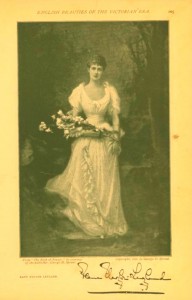
It’s Jennie Chamberlain…from Ohio!
One of the heiresses who really caught our attention was Mary Leiter who fell deeply in love with George Curzon, a young and politically ambitious member of Parliament. Eventually they wed, and after many years he fell in love with her at last. They moved to India and she became Vicereine of India. They lived a rather extraordinary life.
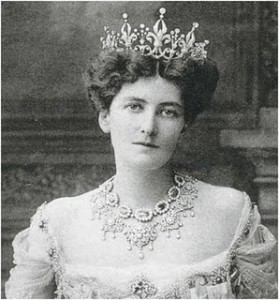
Mary Leiter
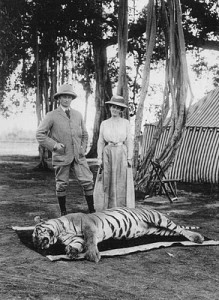
Lord and Lady Curzon of India ( Pre PETA days)
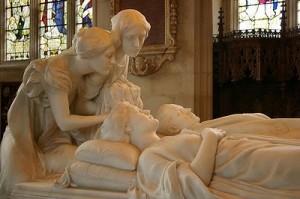
Tomb of George and Mary Curzon
Time Travel With The History Chicks
The only place we are going to send you with this topic is your favorite bookstore or library.
We only touched on the lives of a few women in this podcast, there are a couple hundred and some change to explore and the book that does it best? To Marry An English Lord, by Gail MacColl and Carol McD Wallace. We LOOOOOOVE this book. This is Beckett’s copy. You really should get your own.
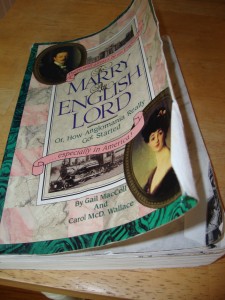
So loved it’s become real!
Another book we both enjoyed was Consuelo and Alva Vanderbilt: The Story of a Daughter and Mother in the Gilded Age, by Amanda MacKenzie Stuart.
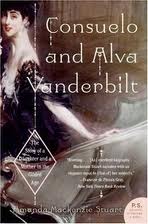
Since you are on a Consuelo bender, check out her book, The Glitter and the Gold.
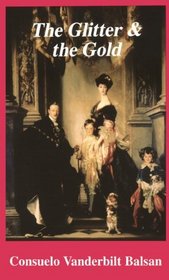
Finally, after you get good and educated on all of these women of the Gilded Age, get your hands on Edith Wharton’s The Buccaneers. Wharton died before the book was finished, but 50 years later, a Wharton scholar named Marion Mainwaring finished the tale of three American women who marry British Nobility. ( Or you could watch the 1995 BBC miniseries,which is available on dvd).
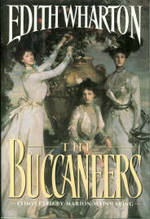
The Buccaneers, by Edith Wharton
As always, music for our podcast comes courtesy of Music Alley. Visit them at music.mevio.com.
by The History Chicks | May 22, 2011 | Shownotes
Yes, we are calling 1993 “vintage”. It’s based on the shoe scale, if you would purchase a pair of shoes from this year and call them ” vintage”, then we can use it for a movie from the same year.
From The History Chicks Dictionary: Vintage- Completely subjective word to describe anything that is too old to be new, but a real prize for someone. Maybe not you. Maybe not us. But someone will love it!
The discussion: The Age of Innocence, 1993 ,directed by Martin Scorsese starring Daniel Day Lewis, Michelle Pfeiffer and Winona Ryder is based on the Pulitzer prize winning novel by Edith Wharton. Since we are mid- Gilded Age series, what a great time to talk about this movie!
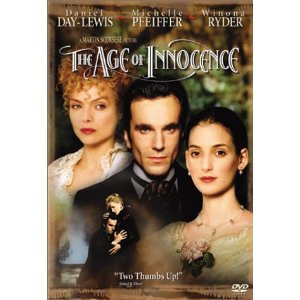
Topic for this discussion
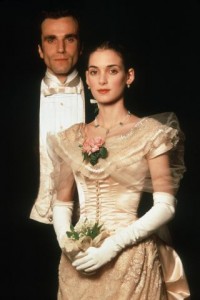
We talk about this...
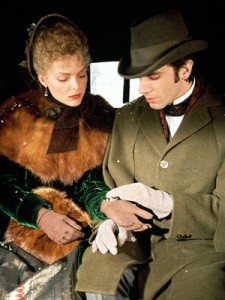
...and this....hubba hubba...
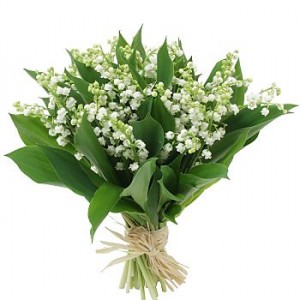
...and Susan loves to talk about this....
(Here is the link for more information about the language of flowers:
http://home.comcast.net/~bryant.katherine/flowers.html )
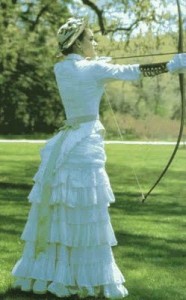
- …and a few choice words about this….

- And finally we talk about what happened here…good or bad? Wise or foolish?
Of course there is more, and yes, the conversation is historically based- not just a review of an older, er, vintage flick by two vintage chicks.
As always, music for our podcast comes courtesy of Music Alley. Visit them at music.mevio.com.




































